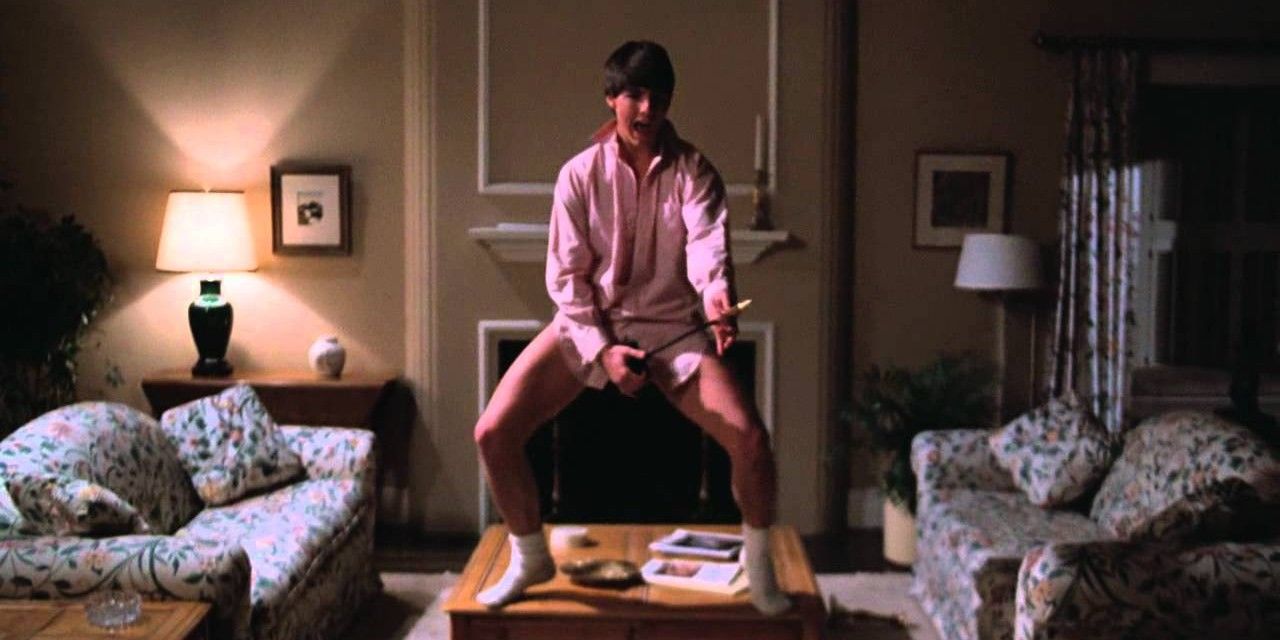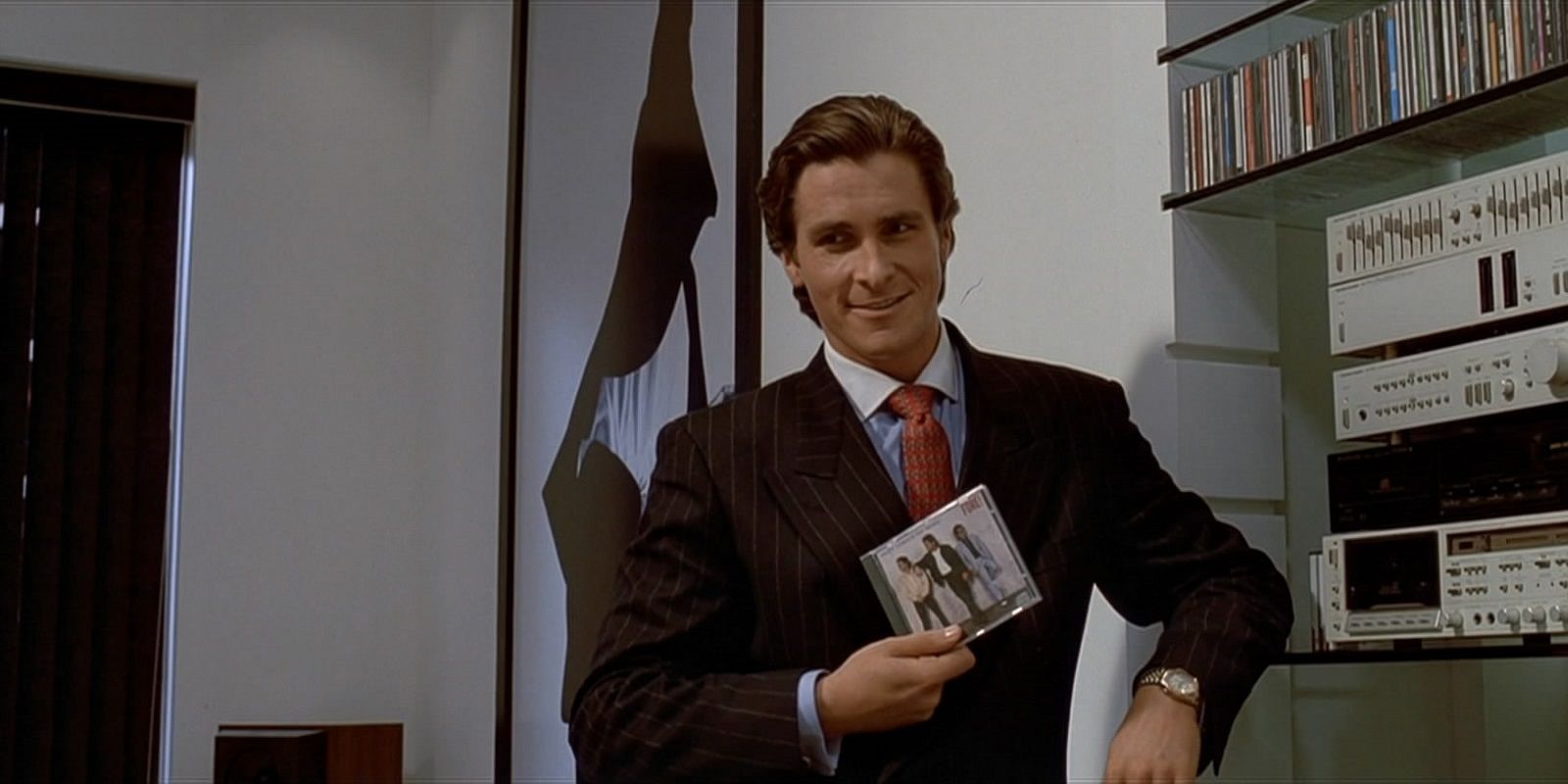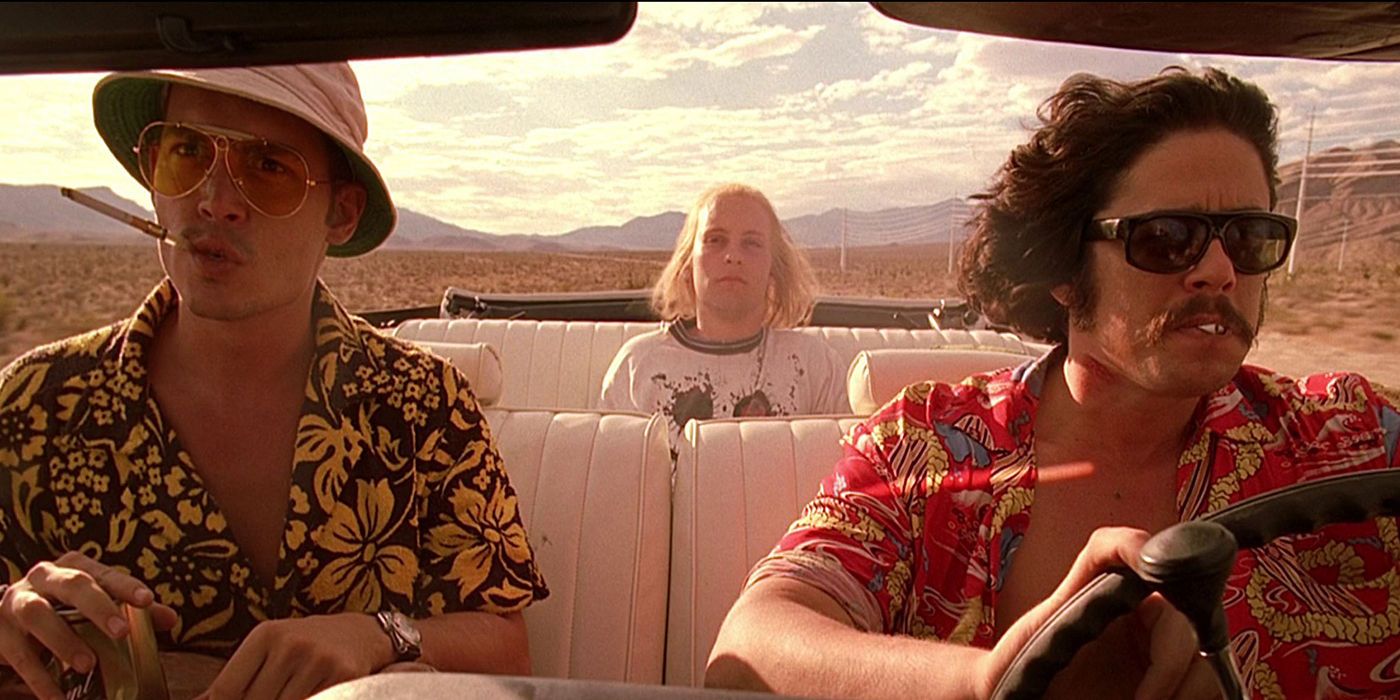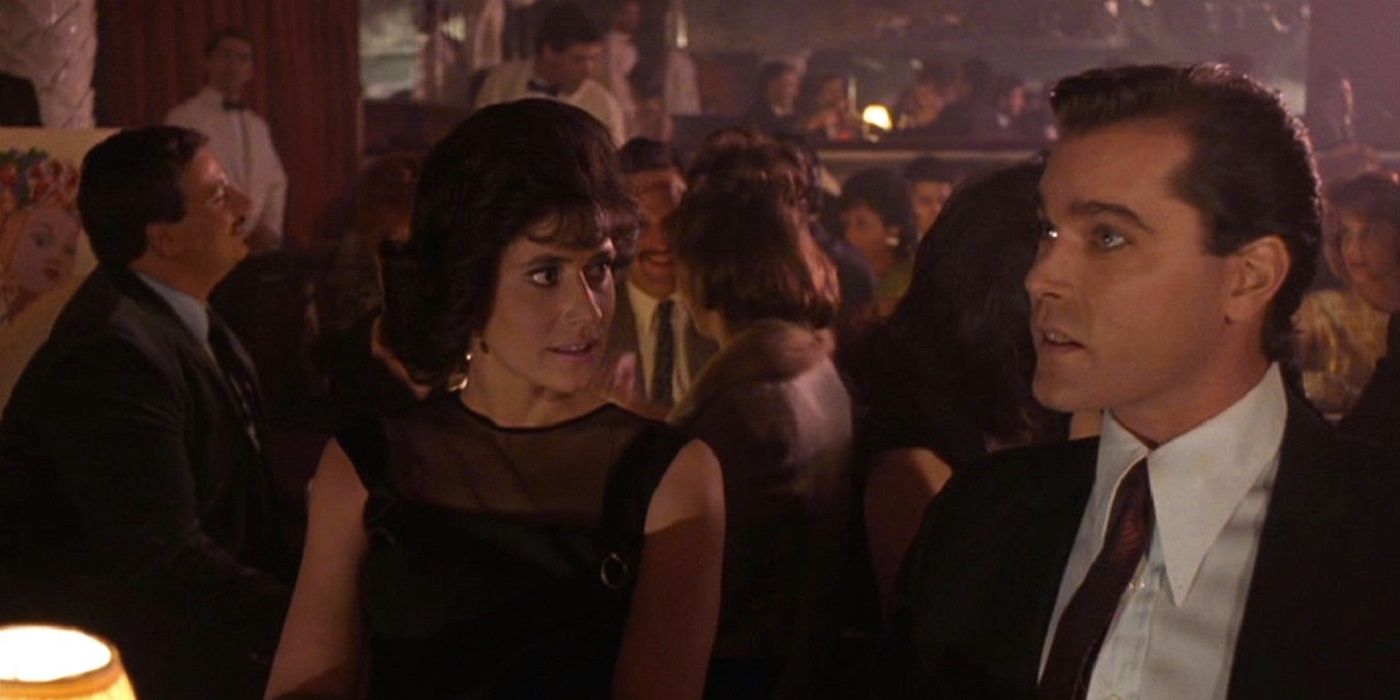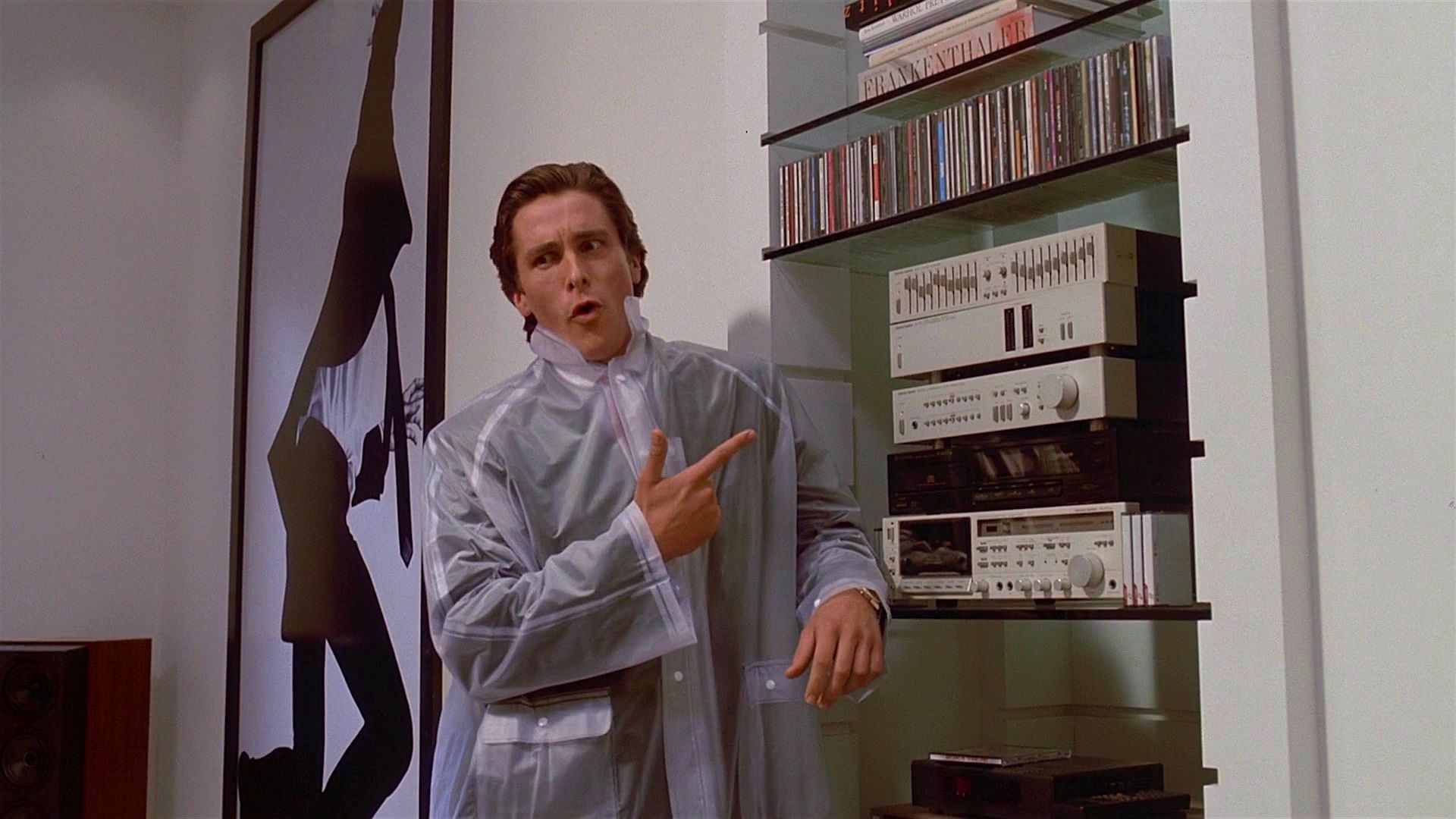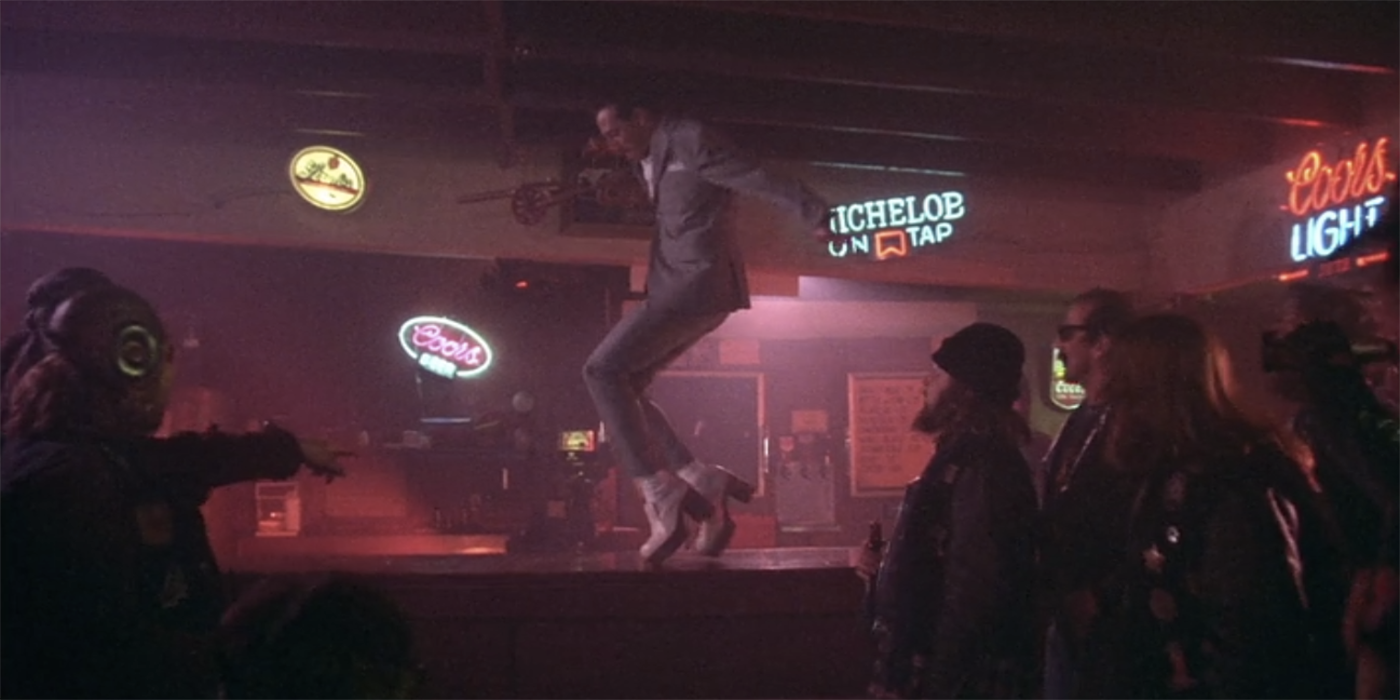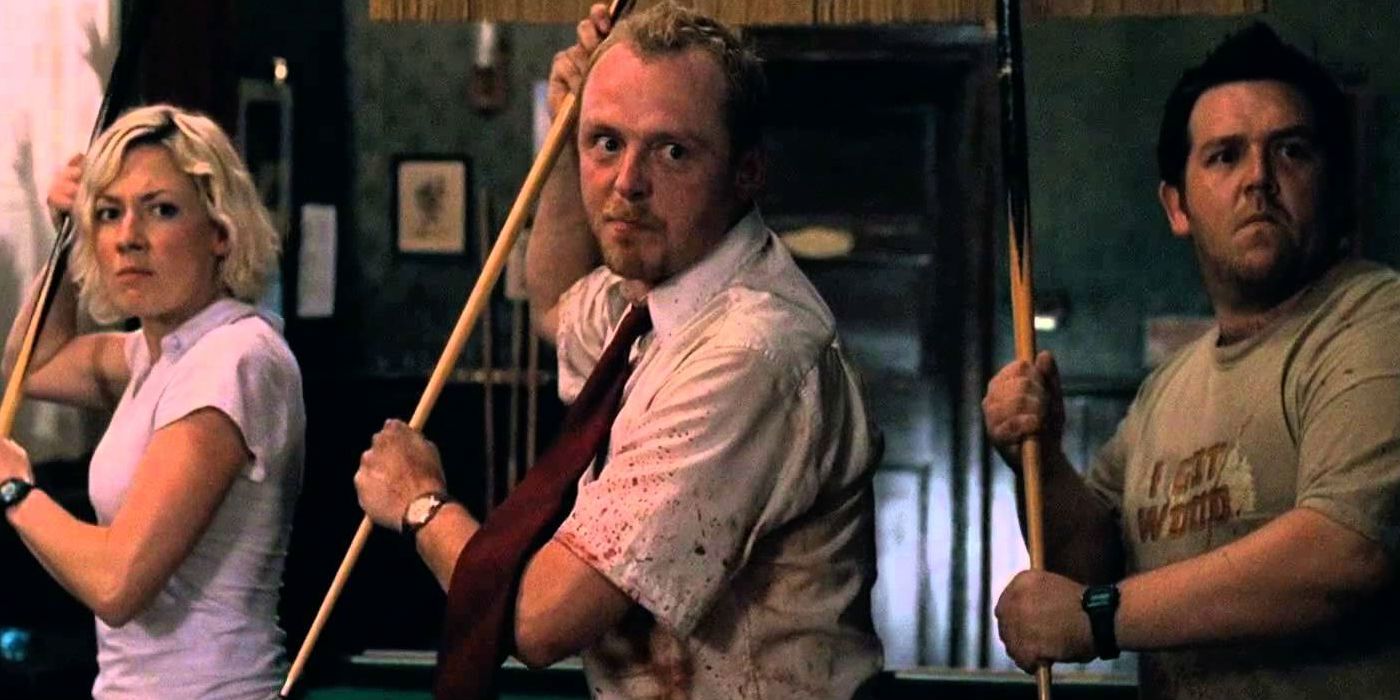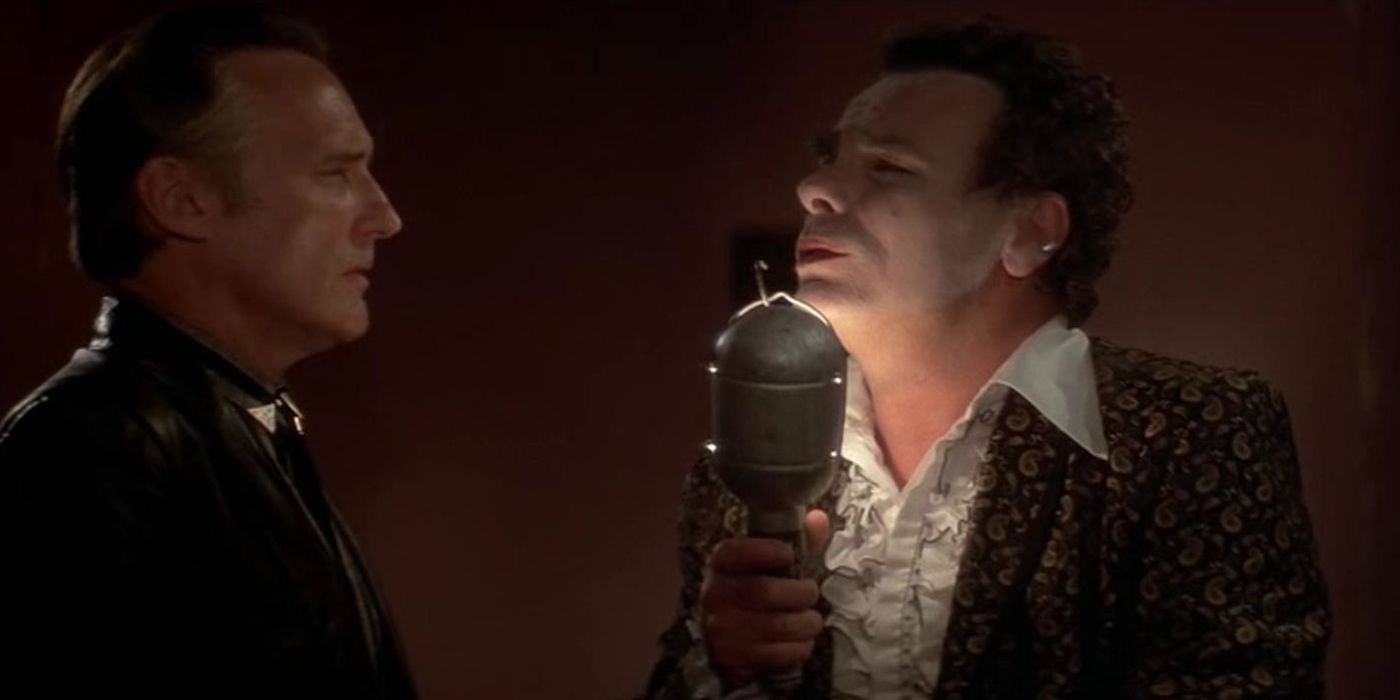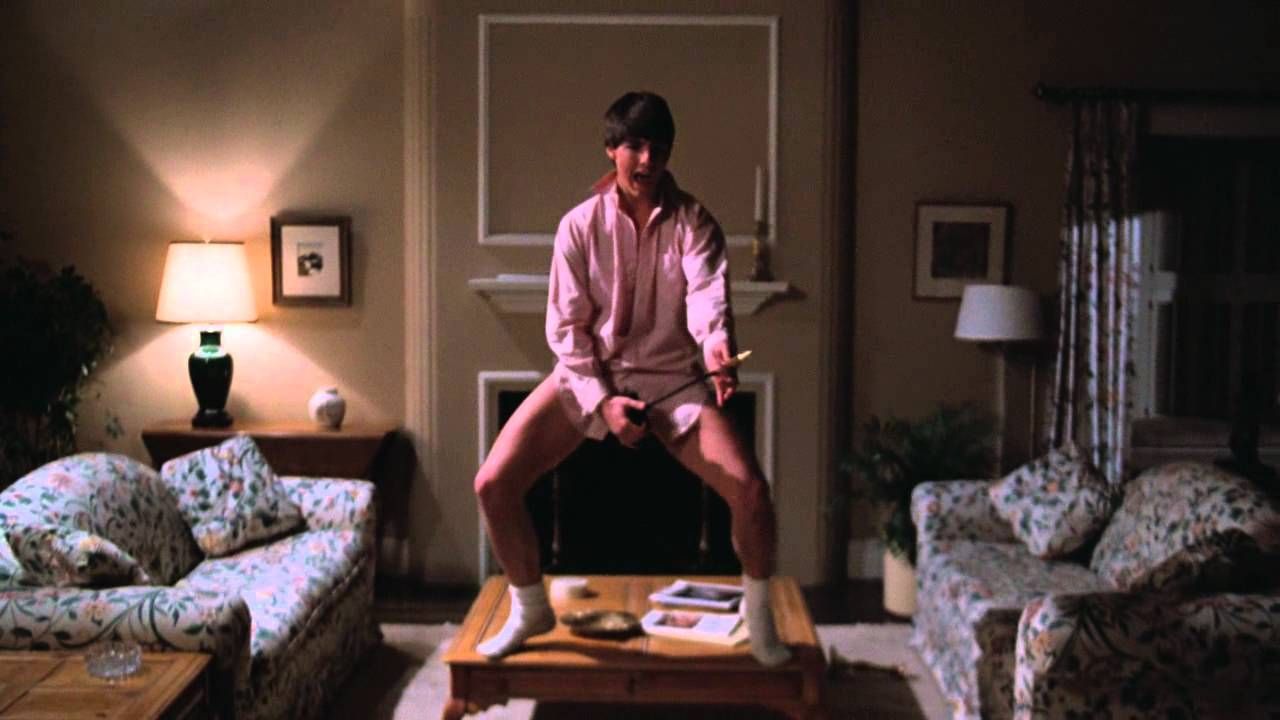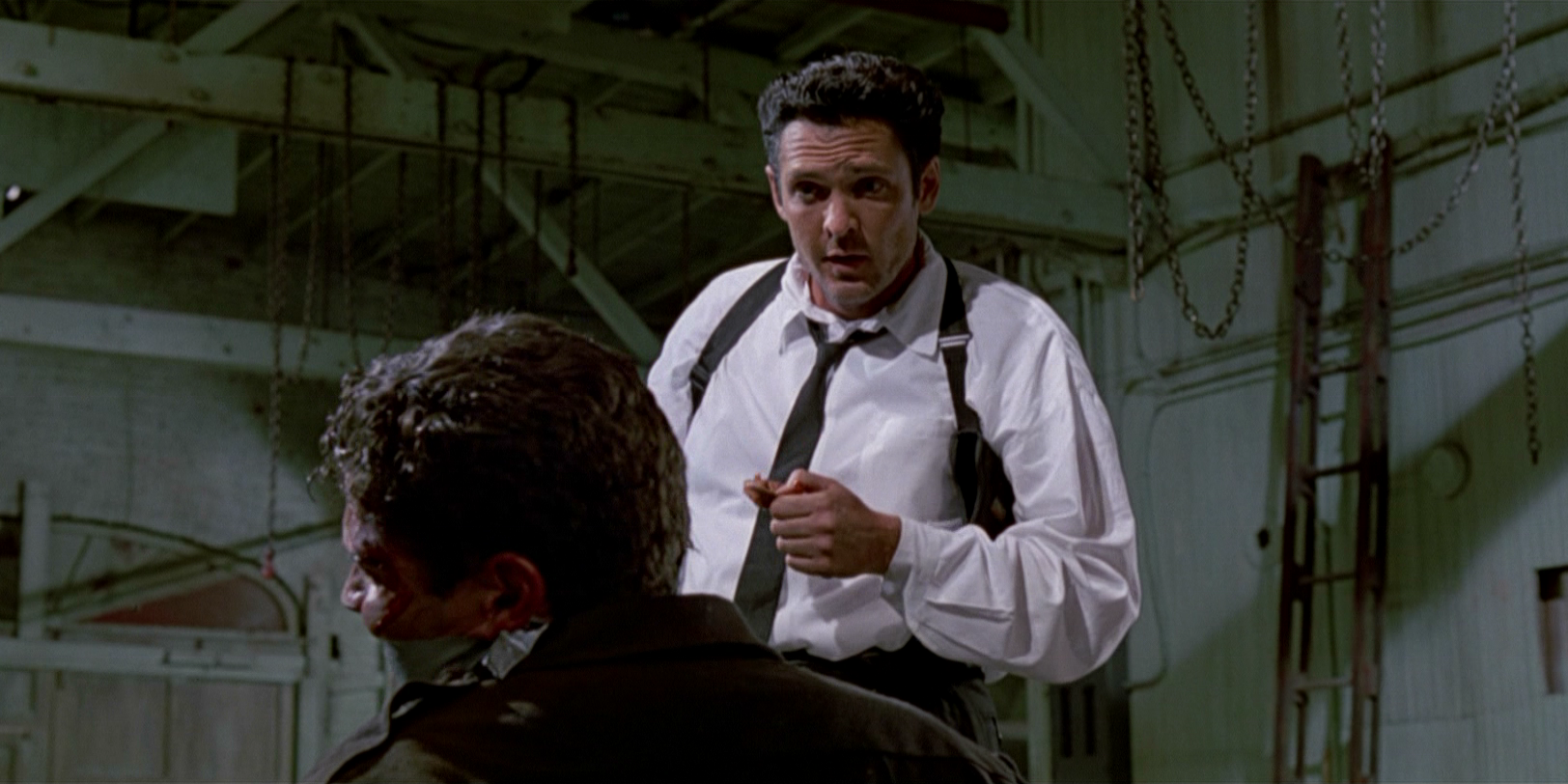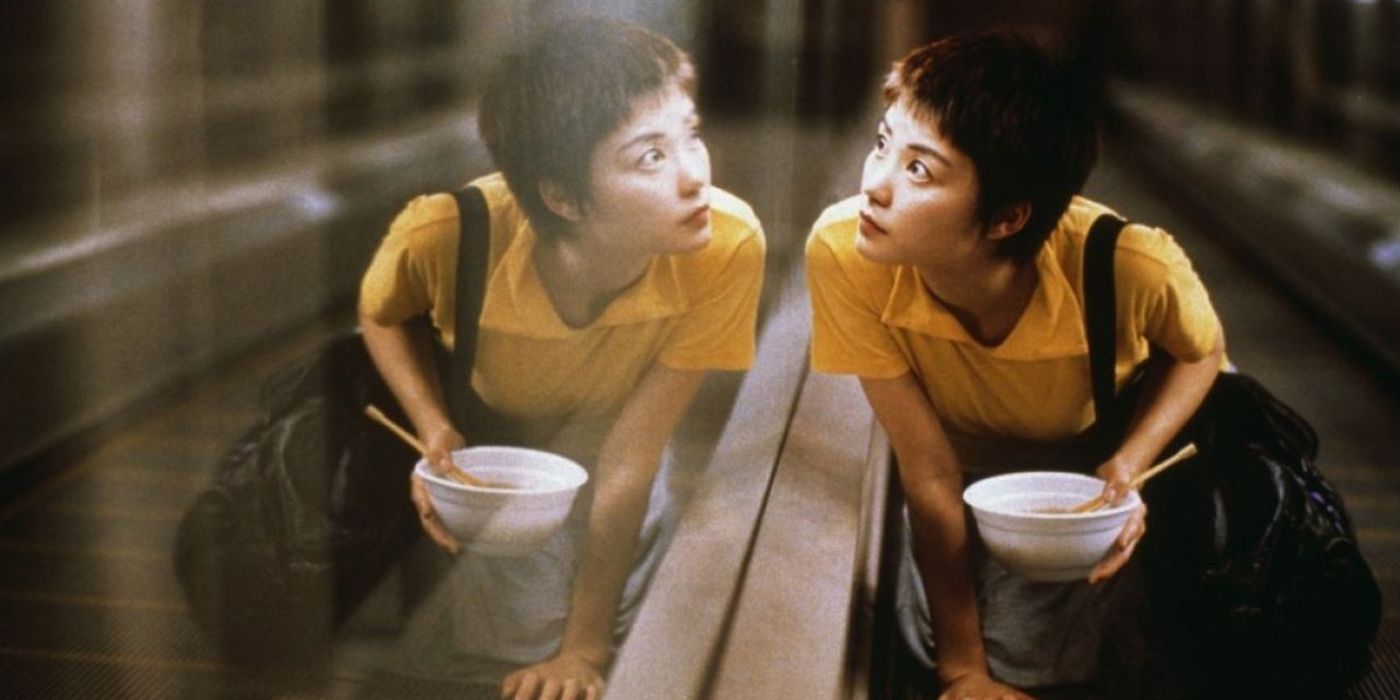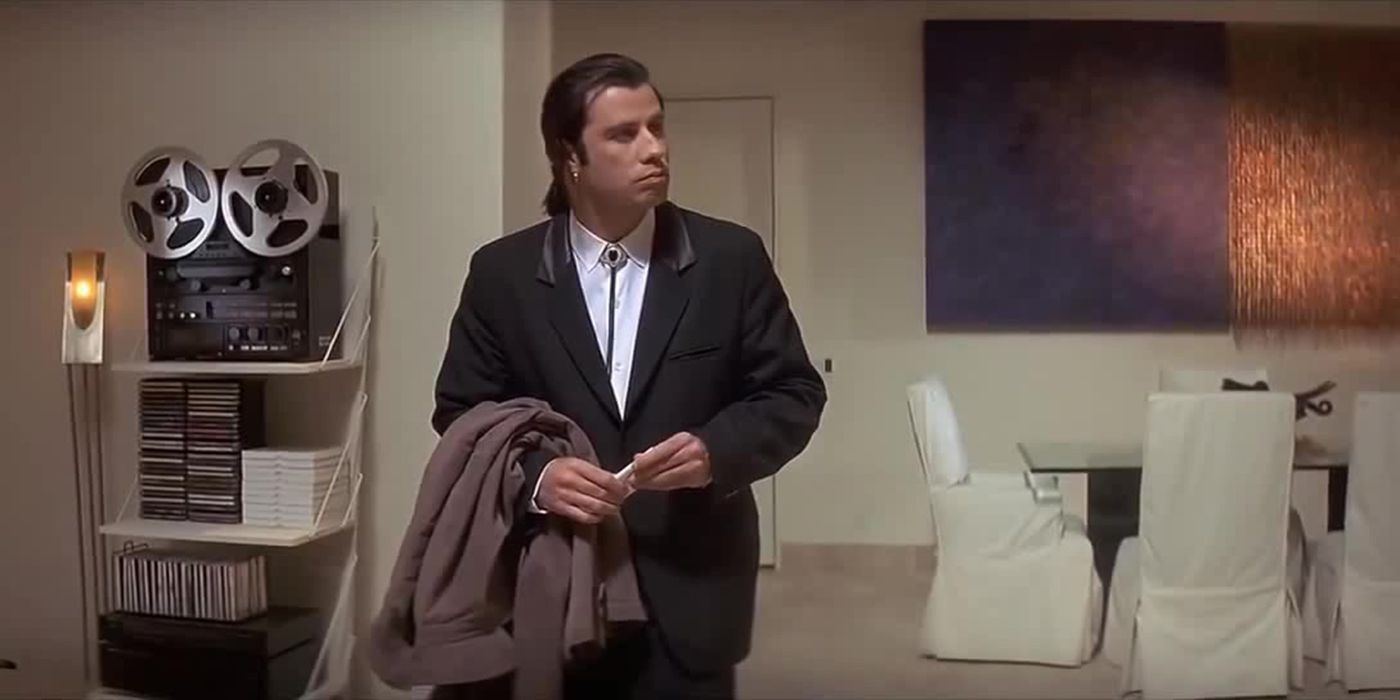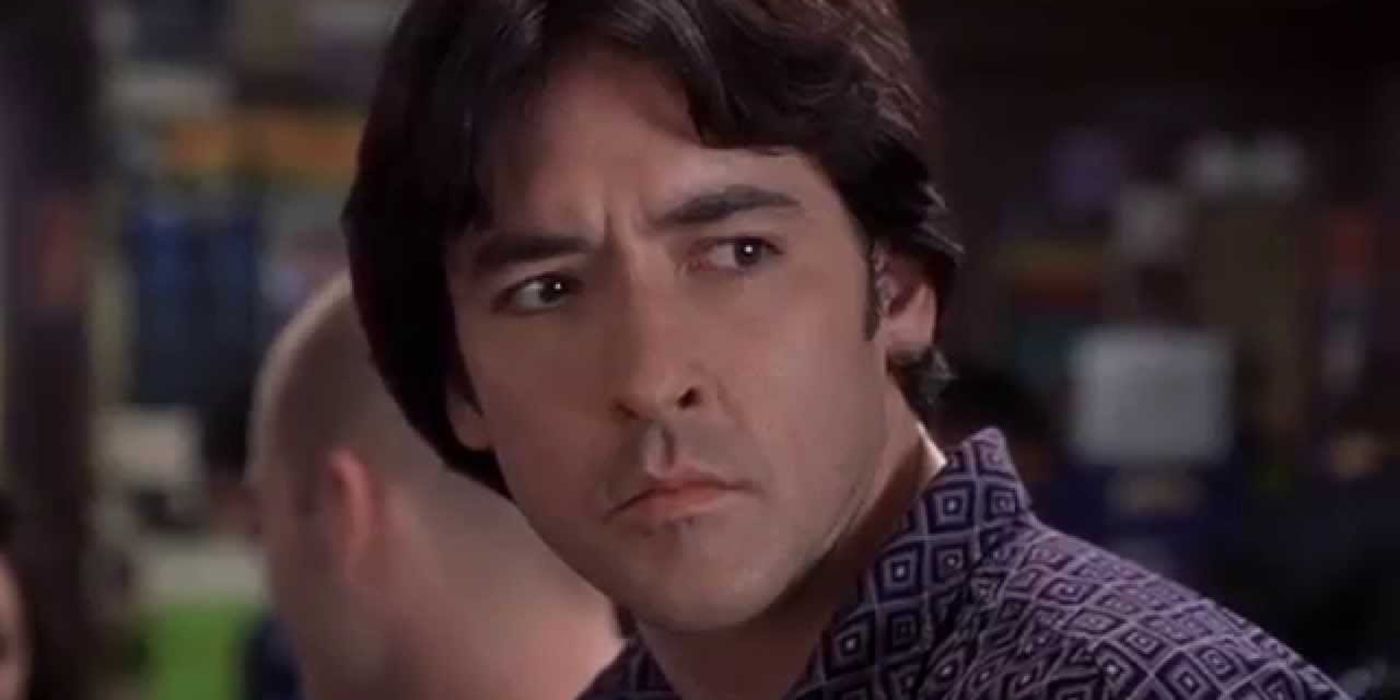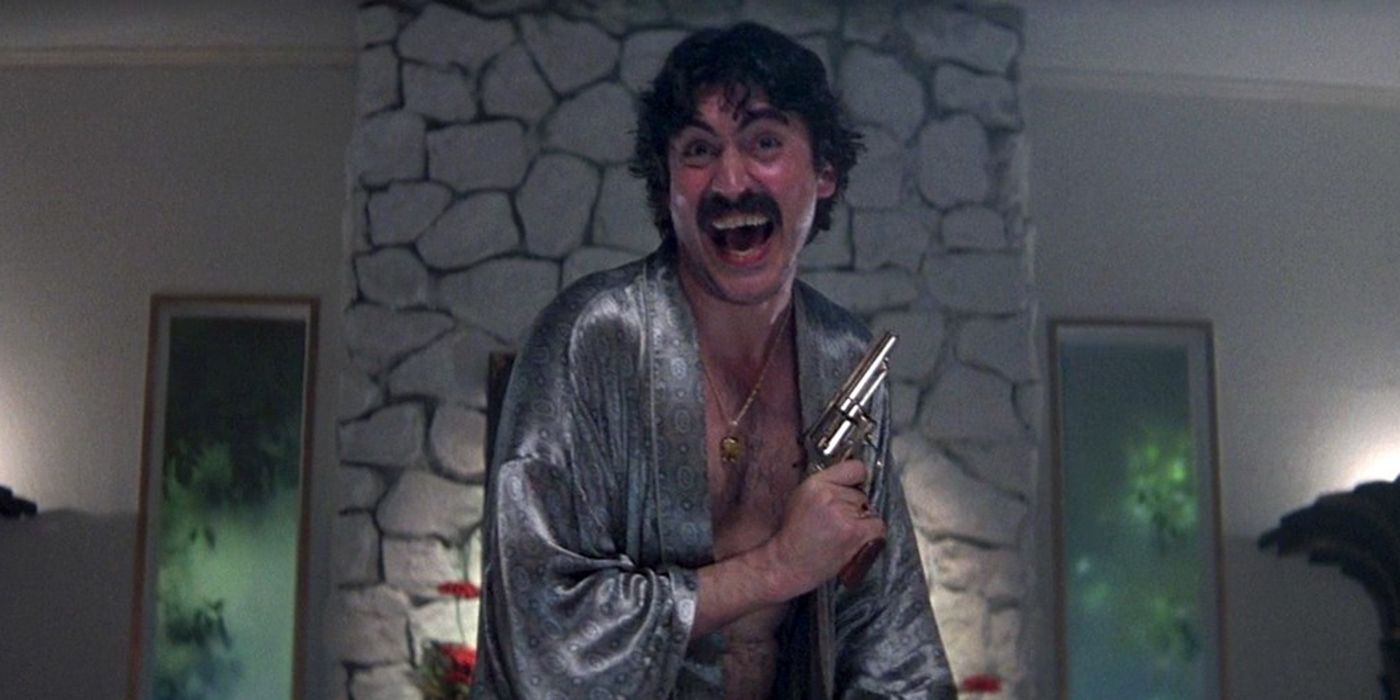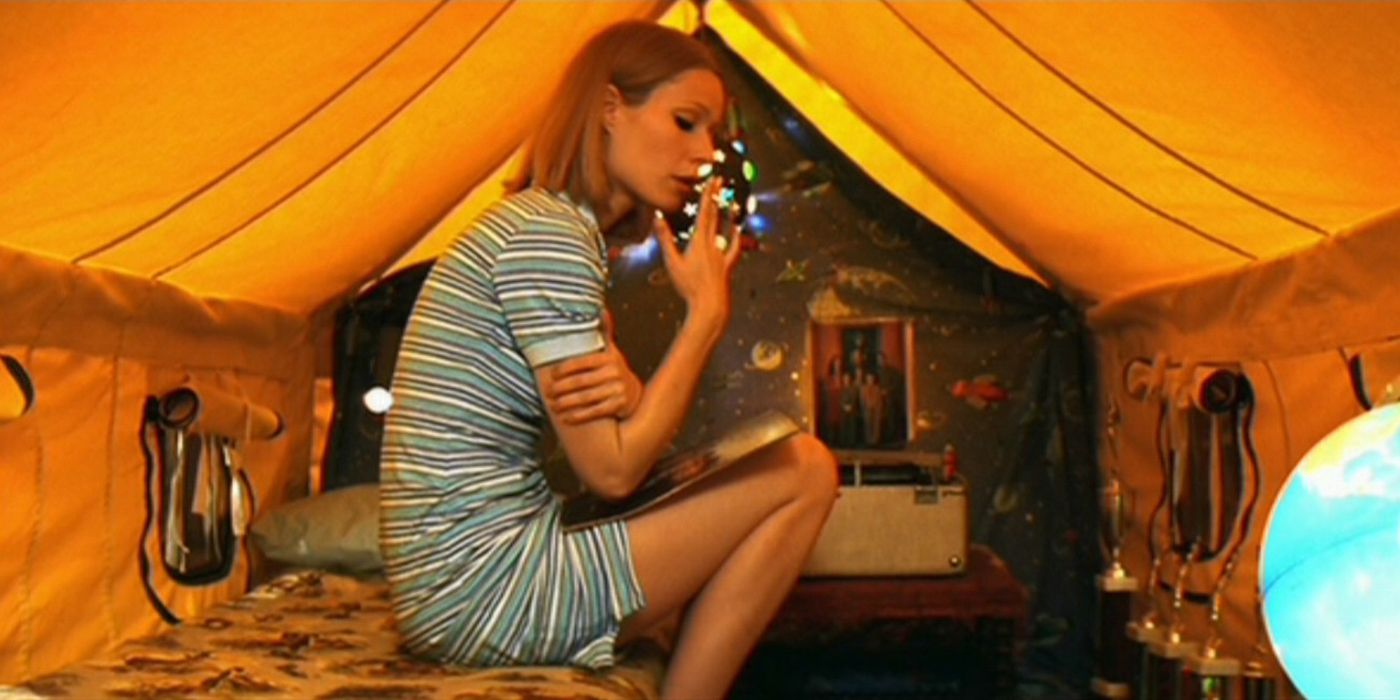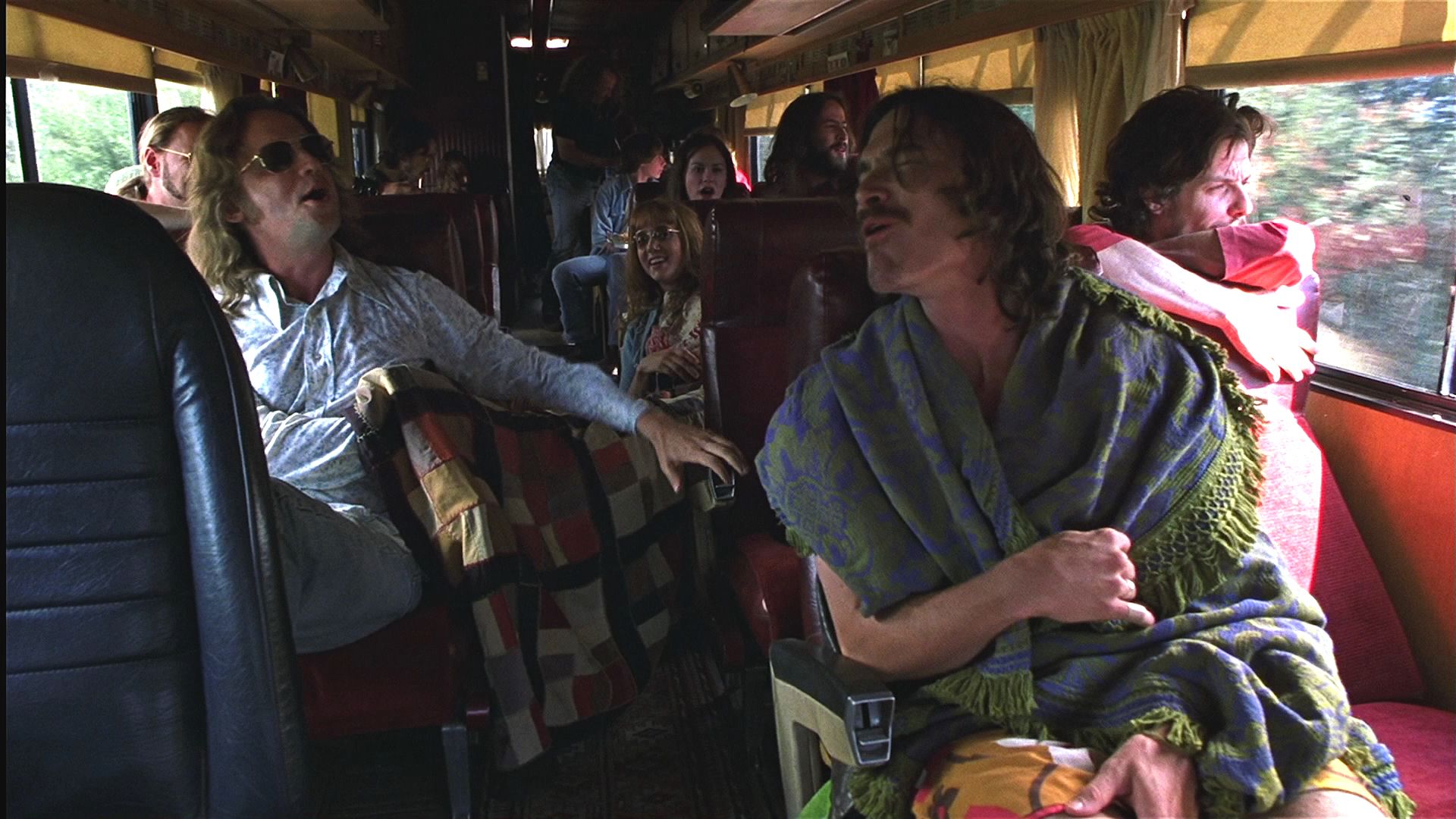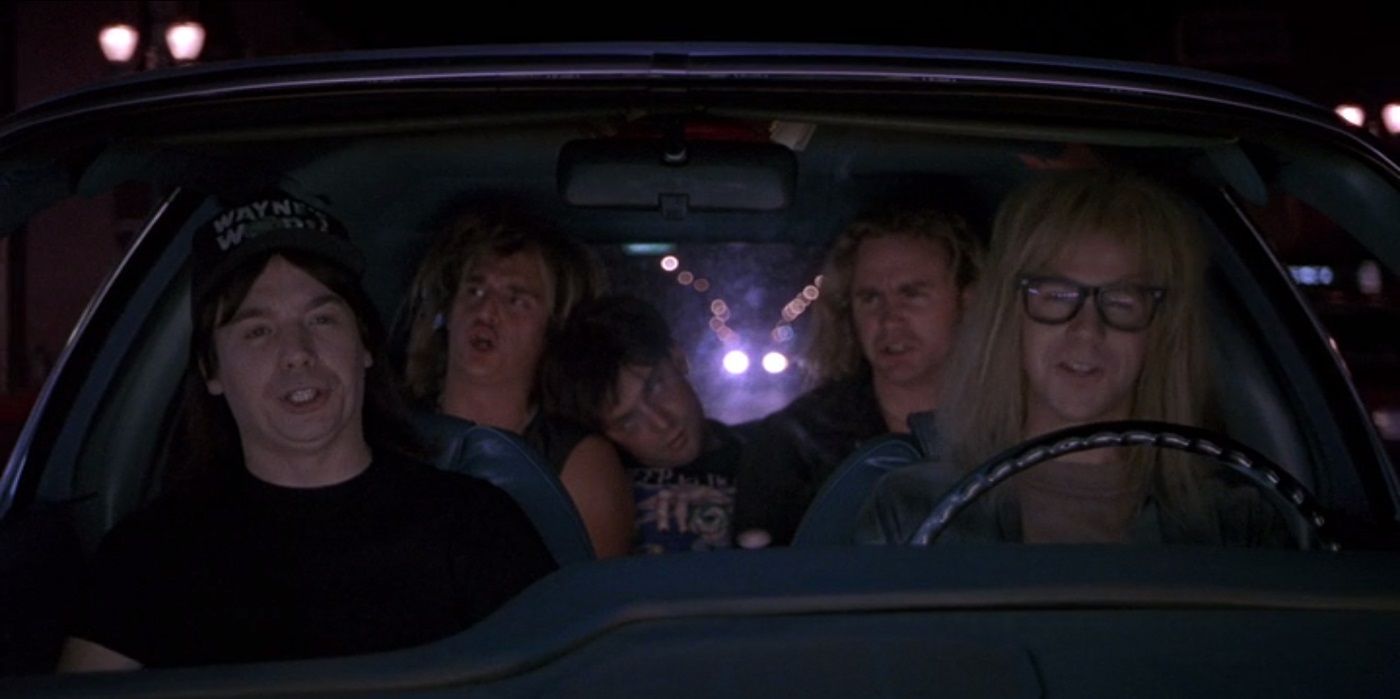It's not easy to find the perfect song to fit a film scene. Although the best examples of this technique are usually praised for feeling so natural and perfect, the truth is that the greatest marriages of film and song came only resulted from a million failed attempts at finding that one perfect tune. It may come across as something that just makes sense, but the process can be brutal.
What's even more difficult is finding a way to insert the perfect song into a scene without simply playing the track over it. Whether it's via a record player in the room or a jukebox in the corner, incidental music is any music that is able to be inserted naturally into a film scene so that it can be heard by the characters as well as the audience. It's not easy to do, but when it's done well, the results are nothing short of magical.
These are the 15 Best Uses Of Incidental Music In Movies.
15. White Rabbit - Fear And Loathing In Las Vegas
There are times when it’s hard to say that Fear and Loathing In Las Vegas is entirely a piece of anti-drug entertainment. Although the movie often goes out of its way to showcase the horrors of heavy drug use (or, in some cases, the horrors of certain drugs entirely) there are other moments which could easily raise the appeal of particular substances in the minds of certain viewers. Ultimately, though, the whole movie is such a dazzling spectacle of sights and sounds that a viewer does themselves a disservice if they were to try to slow the ride down for a moment in order to analyze its purpose.
All of these qualities are perfectly captured in a single scene with the help of Jefferson Airplane’s "White Rabbit." As Hunter S. Thompson’s lawyer (credited as Dr. Gonzo) is sitting in a tub dealing with the mental consequences of having taken too much acid, he requests that Thompson takes the tape player blaring White Rabbit and throw it into the tub with him when the song peaks. His attempt is thwarted by Thompson, who throws a grapefruit at him instead during the agreed upon moment in a scene that is as horrific, humorous and bizarrely captivating as any in the film.
14. Pretend You Don't See Her - Goodfellas
Given that the movie kicks off with the bang of revolver used to finish off a vindictive mobster slowly dying in the back of a car trunk, the last thing you expect to see in Goodfellas is a moment of quiet reflection. Even the most intelligent moments in Goodfellas are almost always accompanied by one character having an outburst of violence or emotion that showcases just how explosive this world, and the people that run it, really are.
This scene, however, is a little different. On the surface, it’s a rather simple sequence. After arguing over the matter of Sammy Davis Jr. (“He’s talented, let’s leave it at that”) a group of gangsters and their girlfriends turn their attention to the stage as Jerry Vale’s "Pretend You Don’t See Her" is crooned out by the in-house talent. Not only do not of them speak a word, but they even appear to be genuinely emotionally affected by the lyrics (even the hyper-violent Tommy looks to be on the verge of tears). While nobody at the table genuinely loves the person they are with, they allow themselves to be swept up in this beautiful moment that doesn’t force them to think about any of it.
13. Hip to Be Square - American Psycho
Patrick Bateman’s life in American Psycho is simultaneously the embodiment of normality and the very antithesis of the concept. On the surface, Bateman is a physically attractive and ludicrously wealthy young man enjoying the life that you might expect someone in his position might enjoy. He goes out for drinks, he power dates and he seems to return quite an extraordinary amount of videotapes. There is also, of course, the slight matter of him being a bloodthirsty serial killer, at least based on your interpretation of the film’s finale.
Bateman’s dual-life is a constant source of fascination throughout most of the film, but it reaches something of an apex in this scene. Before murdering his friend Paul Allen, Bateman decides to play Huey Lewis and the News’ "Hip to Be Square", a song that Bateman insists one must listen to the lyrics to in order to fully appreciate. His words turn out to be terrifyingly appropriate, as the image of Bateman murdering Allen with an ax is complimented visually by a blood splatter (that makes him a literal two-faced character) and by this song, which tells the story of a man who is doing everything in his life the way he has been told is good for him and considers himself to be something of an outsider because of it.
12. Tequila - Pee Wee's Big Adventure
It’s odd to think that a movie as outlandish as Pee-Wee’s Big Adventure could possibly have any deeper meaning, but this guilty pleasure of a childhood film does have a couple of philosophical aces up its sleeve. The most notable of them seems to be the value of maintaining one's inner child no matter how rough a situation may get. Pee-wee’s seeming obliviousness to…well, just about every horror in the real world is the source of most of the movie’s comedy, but it also leads to more heartwarming moments such as his infamous dance to The Champs 1958 hit song: "Tequila."
Faced with an impending death at the hands of a gang of bikers that Pee-wee has offended by knocking down their bikes, our hero calls in a last request and uses it to play "Tequila" on the jukebox. His subsequent dance on top of the very table he was almost killed on at first draws looks of confusion from both the bikers and the audience, but soon thereafter everyone is caught up in the maniacal moment and begins to celebrate it for the levity that it provides to an otherwise far too serious moment and far too serious people.
11. Don't Stop Me Now - Shaun Of The Dead
The revolution of the jukebox has always been its ability to let normal people become DJ heroes for a moment by picking that one perfect song that captures the room. No longer slaves to the random selections of the radio, the jukebox allowed for anyone with a little pocket change to spare to become masters of their own musical destiny with just the slight risk of the ridicule that comes from picking an abhorrent song. Of course, when a jukebox starts playing in the midst of a zombie attack, there really is no proper song that one could choose to make the moment better.
Still, it’s safe to say that none of the characters in Shaun of the Dead wanted to hear perhaps the ultimate feel-good song of all time (Queen’s "Don’t Stop Me Now") come to life while they are staring their own deaths in the face. Simon Pegg’s brilliant quip of “Who put this on” seems like less of a comment on who turned on the jukebox when everyone is trying to stay quiet and more of a casual comment that any bar patron may make if a poor jukebox selection was made. Despite his protests, there’s no denying that the song does unexpectedly manage to capture the moment.
10. In Dreams - Blue Velvet
Your first time watching Blue Velvet is a lot like trying to make sense of a dream five minutes after you wake up. You can vaguely comprehend certain pivotal moments, but trying to understand how everything flows together is the surest way to be driven into madness. It’s not that Blue Velvet doesn’t have a cohesive narrative, but the entire thing is intended to be so surreal that it really does generate that elusive dreamlike sensation that only the best films can.
Then there’s the "In Dreams" scene. While it’s certainly bizarre to watch the world’s most random lip syncer emerge from the shadows in order to give a lounge lizard performance of this Roy Orbinson song, it’s also one of the few moments in the film that really allows you to breathe. Everyone in the film stops their individual pursuits of madness just long enough to enjoy the music and let it rule the scene. This rare instance of levity has long been described by David Lynch as the film’s pivotal moment, due to the way that it just seems to stand out from the rest of the experience. Rumor has it that he even named the bar outside of the apartment that the scene plays out in “This Is It” simply to tip viewers off to his affection for the moment.
9. Old Time Rock and Roll – Risky Business
The crew behind Risky Business could have chosen any song for this scene. It’s a rather simple one, actually, when you break it down. Our young protagonist Joel Goodsen (Tom Cruise) has just watched his parents go away on vacation leaving him with the rare teenage privilege of complete freedom. His first act with this freedom isn’t some elaborate display of debauchery (that would come much later), but rather to crank up the radio as high as it can go, get down to his underwear and lip sing to the music in a moment of unabashed silliness.
Many songs would have served for this scene, but it’s the use of Bob Seeger’s "Old Time Rock and Roll" that seals its infamy. From the tantalizing opening chords to the celebratory nature of the lyrics, this song (which had achieved a modest level of success on its own when it was released four years prior) had suddenly become the anthem of a young generation who saw the use of it in this movie and quickly rallied behind it as the one piece of music everyone must dance ridiculously to once in their life during a moment of total privacy.
8. Stuck In the Middle With You - Reservoir Dogs
After informing his hostage that he is going to torture him anyway for the simple amusement of torturing a police officer, Reservoir Dogs' Mr. Blonde casually pulls a blade from the inside of his boot and asks “You ever listen to K-Billy’s Super Sounds of the ‘70s?” before turning the radio on to that station. While clearly a fan (“It’s my personal favorite.”) even Mr. Blonde cannot possibly be aware of what song is going to come on next. Given his mental state at the time, it really didn’t matter what song it was.
But that song ended up being "Stuck in the Middle With You" by Stealer’s Wheel which, for the audience anyway, ends up being significant. Unlike, say, Patrick Bateman, who was careful to choose precisely Huey Lewis and the News to murder his victim to in order to accentuate the moment, Mr. Blonde is simply looking to unnerve his victim a little further by accentuating how little the impending torture bothers him. Yet, there is something undoubtedly unnerving about watching an act of torture play out to this exact tune that possesses both a “pop” rhythm and foreboding “Bob Dylan-like” lyrics. It forces us to really hone-in on a scene we’d rather just look away from.
7. California Dreamin - Chungking Express
Chungking Express is a movie about love, but don’t hold that against it. Unlike the sometimes sappy films about love that are churned out and written off as date movies when they come under fire for their lack of compelling content, Chungking Express examines the much more intriguing subject matter of passion and desire under the disguise of love. All of its characters are at a point in their life where they genuinely believe that their only chance at happiness is to fall so deeply in love that they are able to burrow away from the weight of their other problems.
While the film tells two such stories in succession, its defining tale involves a police officer and a snack bar attendee that he becomes infatuated with. She herself also has feelings for the man, but perhaps not as strong of feelings such as she has for the song "California Dreamin." Humorously (depending on your sense of humor) she does not seem to recognize the irony in using a song about hopeless dreaming as the tune for her desired escape from Hong Kong. Instead, it is allowed to play throughout their story over the radio or record player with both characters unaware of how it foretells their doomed relationship.
6. Son of A Preacher Man - Pulp Fiction
Pulp Fiction’s intelligent use of incidental music is so great that you could fill an entire list on the subject solely with examples from this movie. If forced to choose just one, however, which should it be? The celebratory “You Never Can Tell” that accompanies the dance scene? The painfully appropriate “Flowers on the Wall” that perfectly accentuates the moment it’s played in? What about Urge Overkill’s iconic rendition of “Girl, You’ll Be a Woman Soon” that serves as the prelude to danger yet to come?
In the end, the honor goes to the comparatively simple "Son of A Preacher Man". What’s funny about this song is that, upon your first viewing of Pulp Fiction, you can’t even be entirely sure that it’s a song that the characters can actually hear. Instead, it just plays in the background as Vincent Vega wanders into the home of Mia Wallace high on heroin. As she prepares her own dosage of drugs, she teases Vincent over an intercom system while Dusty Springfield sings of impossibly pure love with the son of a preacher. Does she really believe that Vincent Vega is that son come to rescue her, or does her abrupt stoppage of the record suggest that she really doesn’t have time for such ridiculous romantic notions?
5. Dry The Rain - High Fidelity
As anyone who has ever tried to share a beloved piece of music with a friend knows, there are few feelings in the world of shared entertainment more painful than watching someone sit in agony as they fail to understand what you see in this particular song. It’s a common feeling that only grows stronger as entertainment becomes more and more accessible. On the other hand, there is nothing quite like playing that same song and watching as your attendee becomes instantly captured by it. This action creates an often unspoken, but undeniable, moment of connection.
High Fidelity is a movie all about the communal aspect of music and, more specifically, the communal aspect of music stores. It should be no surprise, then, that it aims to capture that perfect moment of shared musical enjoyment, but it’s remarkable how easily it relays that feeling in just a couple of minutes. As store employee Rob Gordon (John Cusack) promises to sell five copies of The Beta Band's album, he plays the song "Dry The Rain" throughout the store. Suddenly, everyone becomes transfixed by the music and bobs their heads to the beat. A lone customer that asks “Who is this?” with a sense of wonder that confirms that the magic moment has arrived.
4. Sister Christian/Jessie's Girl/99 Luftballons - Boogie Nights
Traditional filmmaking wisdom states that you don’t accomplish tension through the use of pop songs. Instead, tension usually breeds in scenes of silence or through the use of highly specific, hand-crafted tunes (such as in Halloween). Boogie Nights shatters this concept by using three of the most innocent pop songs of the ‘80s to create one of the most uncomfortable scenes in film history. It starts with three characters heading into the lion’s den of a drug dealer’s home in order to intentionally rip him off. Right from the outset, we know that they have almost no chance of actually pulling this off.
Yet, we are still not prepared for how intense their attempt will be. Complimented by the sound of fireworks popping to suggest impending violence, the trio of pop songs in this scene make it much more horrifying that it would usually be by emphasizing how out of their element the protagonists are. This isn’t some high-level tense drug deal like they’ve seen in the movies; it’s the home of a very bad man that could not be more relaxed. His almost shocking level of comfort clashes with their nervousness so spectacularly that we are almost relieved to see the whole thing explode.
3. Ruby Tuesday - The Royal Tenenbaums
Wes Anderson is the master of putting licensed music to film. Some may call his selections a bit “hipster” for their liking, but you cannot deny that Anderson has a gift for either finding the absolute perfect song to go with a scene or otherwise finding a great song and tailoring a film scene to fit it. If there’s one complaint that you might make about his particular method of applying songs to film, however, it’s that he does have a tendency to let the song speak for the scene as opposed to using it as a simple companion.
His use of the Rolling Stones’ Ruby Tuesday in The Royal Tenenbaums is a glowing example of how that is not always the case. Although this scene, which sees Margot and Richie finally confront each other about their hidden love for one another, starts off with the use of "She Smiled Sweetly" emitting from a nearby record player, by the time that Margot and he are ready to admit that it can just never be and she walks out the door, the record switches brilliantly to the "Ruby Tuesday." The song is not the statement -- it’s the punctuation to an already powerful moment.
2. Tiny Dancer - Almost Famous
During a musical appearance on The Craig Kilborn show, Foo Fighter’s lead man Dave Grohl noted that he wanted to thank director Cameron Crowe for introducing him to the Elton John song he was about to play via the movie Almost Famous. In some ways, it’s a brutally honest confession. Here is an accomplished musician who is saying that he never really heard one of Elton John’s most famous songs prior to the release of Almost Famous in 2001? It’s the kind of statement that a musical snob might look down on.
However, it’s also the kind of honest statement that the scene in question was trying to invoke. After attending a high school party against the wishes of nearly everyone, the band members and touring crew in Almost Famous find themselves back on the tour bus emotionally and physically drained. Unwilling to exchange a single word with each other, they eventually find themselves unable to resist the call of "Tiny Dancer" as it plays in the bus. Soon, they are all singing along to it unable to resist the sheer beauty of the thing. It’s at this point they accept that they are slaves to the music and whatever may come with it.
1. Bohemian Rhapsody - Wayne's World
The common purpose of incidental music in films is to implement a song or songs in a way that feels natural. It’s a tricky piece of business. Not only do you need the right song and the right characters, but you also somehow need to put them in a moment where the sudden appearance of said perfect song will not come across as forced. It’s why the most powerful of scenes that successfully use this technique are routinely cited as some of the greatest scenes in film history. They combine our most powerful senses in a way we can relate to emotionally.
It’s also why Wayne’s World is perhaps the most notable instance of this technique. While there is no deeper meaning to this scene or powerful emotional statement, in terms of capturing the joy of music as we experience it in real life, it is flawless. Here are five friends cruising the streets of their small town one night as Queen’s "Bohemian Rhapsody" plays on. Despite their limited room for movement, they began to dance and move to the song like nobody is watching. It’s a scene that you’ve probably recreated since seeing the movie, but one that everyone has undoubtedly experienced at some point or another.
---
Did we miss any of your favorite in-movie music moments? Let us know in the comments.

